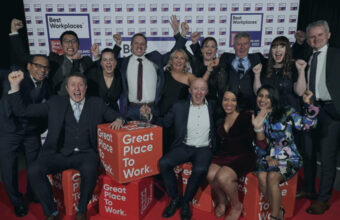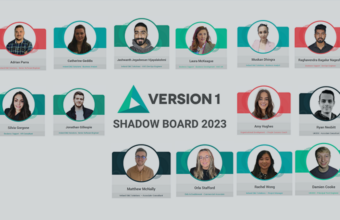Gen Z and Transforming the Modern Workplace
Who are are Gen Z?
Read time: 3 mins
The definition of Gen Z isn’t clear-cut but most researchers now typically use the mid-1990s to mid-2000s as starting birth years for Gen Z. To that end the Pew Research Centre now uses 1996 as the last birth year for Millennials, the prior generation.
How much of the workforce is Gen Z?
Gen Z or Generation Z will make up 40% of the workforce by 2040 according to Universum, an employer branding agency.
The Gen Z cohort is the first truly digital-native generation. Using the latest technology seems almost like second nature to them. The entry of Gen Z into the workforce is evolving the way organisations shape themselves, collaborate, communicate, and conduct business.
Gen Z – Facts & Figures
- 77% consider it important that their company supports diversity, equity and inclusion efforts
- 74% would opt for either hybrid or totally remote work.
- 43% of Gen Z graduates see themselves as having a long career in their organization
- 30% of GenZ graduates have a clear plan in place for the next five years of their career
- 75% of Gen Z respondents said they prefer to receive feedback from a manager in person and in real time.
- 82% of Gen Zers surveyed want mental health days
What Does Gen Z Think About the Workplace?
Gen Z’s deep understanding of technology drives their desire to work with it. According to Dell Technologies, statistics indicate that 77% of Gen Z are willing to be technology mentors to others in the workplace. 91% believe that technology will greatly impact their job choices when choosing between similar offers and 80% say that technology and automation will bring about a more reasonable work environment.
Gen Z is mobile and expects their digital employee experience to mirror a customer experience: painless, personalised, and productive. Fuelled by the increase in remote work, employees view work as something they do rather than a place they go. Employees expect companies to provide a seamless user experience where they can work from anywhere, on any device.
What Does Gen Z Want in the Workplace?
Raised in the digital world, Gen Z is a generation that keep themselves informed about the changing landscape in technology. This provides both a challenge and an opportunity for organisations. From modern endpoint management to data-driven automation, it’s time to meet the needs of your digital workforce. Some examples of modern workplace initiatives include:
- Asynchronous Work Models
An Asynchronous work model allows collaborators to work from anywhere at any time. It supports flexible schedules. The use of collaborative communication tools such as Slack, Teams, Miro, etc can make this more efficient and drive creativity. Further, bringing in AI within those tools can provide valuable insights and can also improve collaboration, especially in a hybrid workplace.
- Virtual assistants
Gen Z does not want to spend time on formalities and administrative tasks. So there already exists a need and use case for emerging AI coupled with virtual assistant tools which can help all parts of the workforce to make better use of their time.
- Digital Onboarding / Self Service
As a generation that grew up learning from YouTube tutorials, Gen Z are used to efficient, self-paced, self-service learning and they want the same in a new role. Generation Z workers feel most comfortable with easy-to-consume digital instructions. The more formal, in-person training older generations are used to makes less sense for these younger employees. Businesses need to be able to transfer relevant skills with short, succinct, on-demand, self-served information.
Reshaping Business Strategies – Gen Z
As a result of the above, many organisations know they need to change but that transition can be challenging.
Executives must consider Gen Z when defining business strategies and aligning the values and the responsibility of the business, from digital working practices to wellness programmes.
In order to attract hires from this generation, organisations must be transparent, work must be dynamic, and there must be scope for growth, creativity and innovation. If they can create a working environment with some of these qualities, they will find that in turn, Gen Z’s loyalty towards them is unmatched.
At Version 1, we want to ensure that everyone, at all levels, have a voice in the company. Traditionally, younger people or new entrants into the workforce are rarely offered a platform to voice their thoughts, opinions, and suggestions to their more senior colleagues. In order to change this Version 1 set up a Shadow Board comprising individuals below the age of 30. They drive key initiatives forward within the company, and provide feedback to senior decision makers. The Shadow Board is sponsored by the CEO.

Read about the Version 1 Shadow Board.
About Version 1
Version 1 proves that IT can make a real difference to our customers’ businesses. We are trusted by global brands to deliver IT services and solutions which drive customer success. Our team of difference-makers work tirelessly to provide independent advice and deliver impactful changes to help our customers navigate the rapidly changing Digital-First world we live in. Our greatest strength is balance in our efforts to achieve Customer Success, Empowered People and a Strong Organisation, underpinned by a commitment to our values. We believe this is what makes Version 1 different and more importantly, our customers agree.


